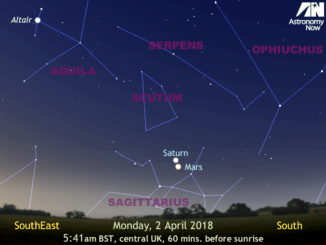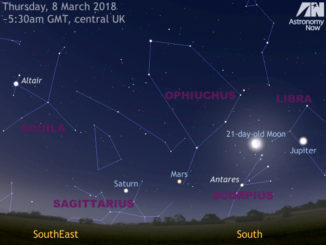
See the Red Planet, Saturn and Moon get close in the dawn sky
Early risers will already be aware that there’s currently a lot of planetary activity in the morning sky, but at dawn in Western Europe on Monday, 2 April, Mars and Saturn will be just 1¼ degrees apart and seen in the same field of view of telescopes at 30x magnification. The waning Moon is close by on the mornings of 7 & 8 April too.









